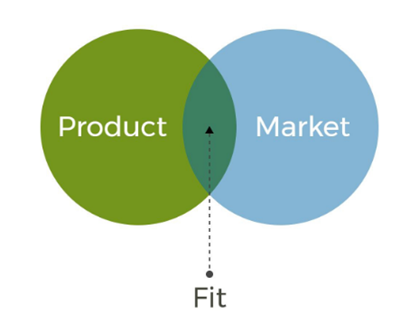On 10/26/2021, the online event “Digital Bash – Female Experts” took place. Outstanding female speakers spoke about various marketing topics.
I was happy to be there and spoke about International Marketing. In this presentation I mentioned examples from international practice and derived 5 important tips for successful International Marketing.
You can find the detailed version of my talk in this article. Have fun reading it and, most importantly, putting it into practice!
Introduction
Internationalization offers many opportunities, but international business is much more complex than national business. Efficient marketing is essential for this. It requires commitment, resources, multicultural thinking and, above all, a different strategy.
Challenges of International Marketing
International marketing is about marketing activities that take place across borders.
Among the many definitions that exist on the term marketing, you will always find the following words:
Needs, Benefits, Changes, Timely, Recognize, Identify, and above all, the most important word of all: Customers.
Marketing is above all about communication. Even in the national market, where we know the culture and language, we face great challenges. In international markets, it is even more difficult to market a product or brand, because there are different norms, languages, expectations and behaviors than the ones we know.
The following tips can help you make your International Marketing more successful.
Tip 1: Think BIG – Think global – Think ahead
Many companies that launch a new product or brand first start in their own country, some even in 2 or 3 other countries. This strategy is basically not wrong, but it is recommended to think strategically ahead from the beginning and ask yourself the following questions:
Which countries could be interesting for the new product or brand in the future? Which could be important?
Even if you don’t aim to market there for another 5 years, it makes sense to register the brand and domains in the “important” countries as well.
There are numerous well-known companies that have not done this and then had to rename their product in certain countries, because the name was already registered. An example of this is Burger King, whose name in Australia is “Hungry Jack’s.” Or the beer Corona, which for years was called “Coronita” in Spain.
The problem with this is that you lose the marketing advantages of an international brand and the operational overheads and therefore the costs are much higher.
It is also important to have the foresight to consider all the major countries when creating a brand and to create product names, colors and logos that can be used internationally. Examples of some car names that are very unfortunate choices for other countries or languages are shown in this table:

Tip 2: Know your customer
As already mentioned, in marketing the “customer” is the most important thing.
Only when we understand what is useful to the customer can we provide or enhance that benefit.
Therefore, it is indispensable that we gain comprehensive knowledge of the market and the culture and, most importantly, that we understand what the customer’s behavior is in each country: Their needs, their preferences and priorities. What is the buying and decision-making behaviors like? How do customers evaluate the competition? You can work out advantages for yourself from the weaknesses of the competition.
For successful marketing, you should also know which media customers use and how they obtain information.
It is important not only to consider the market in general, but especially that of the intended, specific target group, because even in the same country, customers differ depending on the industry.
What should be avoided in any case: Assuming that “same language” countries (or neighboring countries) are the same or similar. In practice, this happens more often than one might think. For example, some companies assume that they only need to translate a brochure into French and that it will be fine in France and Belgium. There are also many examples of companies that do marketing for Spain, which they then use translated into Portuguese, although there the culture and many circumstances are quite different.
In some industries or for some products it may not be a problem, but that is why it’s so important not to just “google” general information about the country, but to know their specific target audience.
No one knows the customer better than they do… That’s why Customer Feedback is the best way!
Tip 3: Global? Local? Glocal!
An important question in international marketing is always whether to standardize internationally or differentiate locally.
Standardization has efficiency advantages, while differentiation has effectiveness advantages.
The question is not easy to answer, because again it depends on the product, the industry, the company’s goals, etc.
The decision should not be made on the basis of cost advantages, but on the basis of the initial question:
What customer benefits does my brand or product offer in different countries?
It makes sense to pursue a “glocal marketing” approach.
We start with the first “global” element: the brand. In the concept of identity-based brand management, an international brand acts as a connecting reference object between the different countries.
For this purpose, important parameters of the brand are defined which must be the same everywhere, i.e. a brand identity or brand personality. The brand personality should therefore be identifiable in the same way in all countries.
Which parameters of the brand or product should be localized in other countries can be determined with the help of TEMA-Q’s Product-Market Fit Study:
Product-Market Fit study
The aim is to understand the local customer in a specific industry and in relation to the specific product or brand to be marketed.
This is where the “right” product offering is sought in order to move more easily and quickly into the growth phase.
Product-Market Fit includes not only the product, but also the entire environment, such as price, financing, distribution channels, service, etc.

Goal of the study:
– Gain insights to maximize customer value and reduce customer concerns and issues.
– Enable informed decisions to be made about key country-specific adaptations
Tip 4: Invest in captivating content
Content has become much more important in our digital world. The customer has access to so much content today and therefore the content needs to be captivating.
Some companies create content that is then easily translated for all countries. But internationally, content should only be used if it is relevant to that country.
Additionally, if the content is captivating and relevant, then it should be noted that word-for-word translation is usually not enough: localization is necessary. Attention must be paid to cultural norms and values, political and economic differences, among others. But not only “texts” are important, one should also pay attention to whether visual, verbal, non-verbal or auditory localization is necessary.
Customer feedback studies can help (especially through the Voice of Customer) to identify content topics that are captivating and relevant to the target audience.
Tip 5: Glocal KPIs – Local objectives

When talking about “successful” International Marketing, you should ask yourself: “What does success actually mean for my company?” “What are my company’s specific objectives?” and “How can I ultimately measure whether I have achieved those objectives?”
In order to be able to measure the success of marketing measures, the ACTUAL state must first be recorded. To do this, customer-centric KPIs (key performance indicators) should be identified.
However, it is important not to define too many KPIs, but to consider carefully: “Which are the really important ones?”
An optimal basis for determining these KPIs is the Voice of Customer.
In International Marketing, it is important to measure and compare progress in different countries. For comparison, KPIs should be defined that apply equally to all countries. The data collection method should also be the same in all countries.
However, this does not mean that the same targets apply to all countries. The targets must be adapted to the market conditions, such as market maturity, how long the brand or product has existed in the market, local challenges, etc.
For example, one criterion might be brand awareness. Brand awareness could be a KPI applicable to all countries. However, the target for a country where the brand has only been sold for a short time should be lower than for countries where the product is already established.
The results should be checked at regular intervals, e.g. by repeat surveys. If the results have changed in the wrong direction, it is important to analyze deeper insights and adapt the marketing plan accordingly. If the results are positive, the reasons should be analyzed and the learning curve used for further strategic measures. To do this, it is essential to analyze not only the figures, but also the corresponding, more in-depth reasons.
With the ClaralytiX analysis tool from TEMA-Q, KPIs can be easily and clearly traced back to the Voice of Customer and compared internationally. ClaralytiX offers up to 50 different evaluation options, also in form of tables and graphics. It is web-based and can be used easily and transparently in all areas of the company internationally.

Summary – 5 tips for successful International Marketing
For all studies needed for successful International marketing, we at TEMA-Q GmbH can support you with consulting, conception and implementation.
Feel free to contact us and we will discuss the best solutions for your company’s specific needs.
Arrange a phone appointment with us right here, or contact me by e-mail:
Author:
Jacqueline Pirkelbauer – International Sales Director

